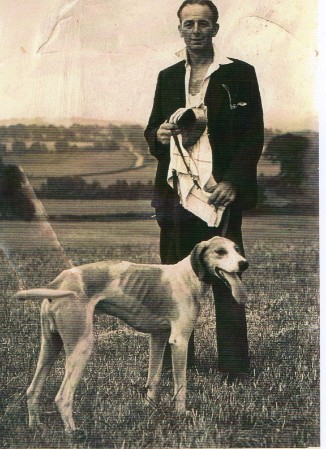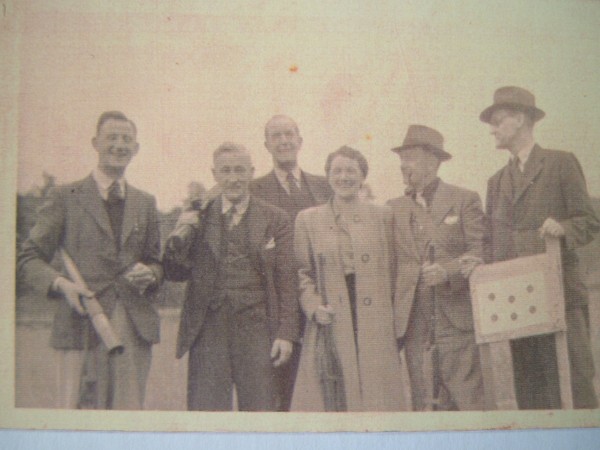Sport in the Parish
Rugby
Cummersdale at one time had a quite famous Rugby team, the Cummersdale Hornets. In 1893 they created a bit of rugby history. Two of the players, Tot Forsyth and George Boak, who both worked at Stead McAlpin and played for the recently formed Cummersdale Hornets team. After playing one season for the Cummersdale club they were visited by a member of the Huddersfield rugby club in the summer of 1893. Forsyth and Boak decided to play for Huddersfield, but a connection had been made between the players and the member from Huddersfield. He had been observed at many places locally with the two players including the Black Lion at Durdar. An inquiry was held at the County Hotel in Carlisle on the 13 October 1893 into why Boak and Forsyth had transferred their services to Huddersfield. Also called to the inquiry was the member from the Yorkshire club who, it was alleged, offered inducements to the two players from Cummersdale, including their transfer tickets to Huddersfield. By mid October 1893 a further inquiry was held, this time at the Park Hotel in Preston. Further evidence was discussed which included evidence from two other Stead McAlpin employees, Tom Jordan, who was also the secretary of the Cummersdale Hornets club, and J.H. Dobinson who was Stead McAlpin's Cashier. The conclusion reached at Preston was annouced at 11 o'clock by the President of the inquiry:that Forsyth and Boak were professionals under Law 2, Clause 2 of the professional laws. On 14 November 1893 yet another inquiry took place, this in London where the whole case was gone over again. The end result was that Huddersfield were suspended for the season and of course the decision by Preston inquiry regarding Forsyth and Boak was upheld and they were banned from ever playing in the amateur union again. This was the case that made rugby history with George Boak becoming the first professional rugby player.

The Cummersdale Hornets Rugby club 1892 -93.
Greyhound racing.
The Cummersdale greyhound racing track was situated at the bottom village on the Rifle Range field and alternately they used the signal box field the following year. Both these fields were situated under and through the railway bridge. The Rifle range field was on the left and the signal box field was on the right between the railway and the mill stream,(now dried up). The type of track used was called a flapping track. The hare that the dogs chased was made from a leather ball with about 18 inches of rag behind it. This was attached to a long wire that stretched the full distance around the track against runners, which had the end attached and partly wound round the rear tyreless rear wheel of a jacked -up motor vehicle. When the vehicle engine was started and put into gear, the rear driving wheel wound in the wire pulling the "hare" behind it, the traps containing the greyhounds opened and they chased after the leather ball and rag,(the hare). Most of the time this worked satisfactorily but on occasions the engine of the drag vehicle slowed down, this of course slowed the hare, causing the leading dogs to slow up which allowed the slower dogs to catch up or pass the leading dogs. This of course made a nonsense of following the form of any greyhound. Sometimes the vehicle engine stalled, or the wire snapped and all the dogs fell over the hare! I recall an amusing incident one night when during a race, a hound named Seagull, was racing and when it got to the bend it jumped the side fencing and made off towards the river, it swam the river and was last seen running at full speed towards Blackwell where it lived.
The track first started in 1954 , racing took place every Friday evening from early May until late August, starting at 7-15 pm, admission , Gents 2 shillings, Ladies 1 shilling. Refreshments were on sale run by the ladies from the village.
Hound Trailing.
In the 1950s Cummersdale was the home to a brilliant trail hound by the name of Mr Wilk. The hound was bred and trained by the late Mr Tom Harrison (Tosh), who lived at the second holding as you leave the village (now a newly built house). For those who dont know about hound trailig I will explain;- An old rag or sack is soaked in a mixture of paraffin, turpentine and aniseed, it is then tied to a short rope and is dragged over the fields, fells, paths, roads and under and over obstacles. The distance is usually between 5 and ten miles in a round circuit. The courses are usually visable for some but no all of the way.The hounds followed the scent all the way around the course that had been laid by the man pulling the soaked sack, and the first hound back over the line wins. As I mentioned earlier, Tosh raced his hound, Mr Wilk. It was 1953 when it came to the fore as a pup. After a few minor placings, in May of that year he won his first trail at Gelt Bridge. By 20th June Mr Wilk had 4 wins, 6 seconds, a third and five fourth places to his credit. Cider King and Firefly were the only two hounds above him in the Border Hound Trailing Association league table. Over the following few weeks he added more wins to his credit. By the end of 1953, Mr Wilk had won 19 trails with 12 seconds and several other places, making him champion puppy for 1953. In 1954 Mr Wilk was racing in senior trails, by the end of 1954 he had won 15 trails. His rival in the league Hillside, had one less win but had more places and won the championship that year. The following year, 1955 Mr Wilk won the Championship with 33 wins. In 1956 he won the Championship again but he also won the Cumberland News Cup as well. He repeated the same the following year.

Tosh Harrison with Mr Wilk
Football
Cummersdale also had a football team.

more information to come..................
Boxing.

The 14th Cummersdale Scouts Group boxing team,1938. Left to right- Front row,
E Sewell, Scoutmaster H. Beaty, Group Scoutmaster D.Milligan and J. Fyfe. Standing; E.Harkness,
G.Sewell, and T. McFarlane.
Rifle Range

Some of the members of the Cummersdale Rifle club, including Mr John Ryan Snr on the left.

John Ryan snr, taking aim at the small bore range near the red cliffs.